
| Home | Deepsky Atlas | TheAstronews | Links | Solar System | ||||||

Hawaiian Astronomical SocietyConstellations: Auriga -- Tragic Charioteer, or Herdsman? |
||||||||||
Auriga is usually identified with Phaethon, the son of the sun god Helios and Clymene. (From the 5th century BCE, Apollo, originally a deity of light, was more and more interpreted as a sun-god). Responding to the desire to confirm that Helios was his real father, Phaethon confronted him about it. To prove his paternity, Helios promised to give him whatever he wanted. He asked for the permission to drive the sun-chariot through the heavens for a single day. Helios regretted his promise, and sought long and hard to dissuade his son, but a promise is promise; he had to let him make the attempt.
Phaethon soon discovered that the chariot was much harder to handle than he had imagined. The horses soon realized the charioteer was different, and veered over the sky. Eventually he completely lost control. The chariot grazed the earth and the Nile hid its head. It soared into the far north, causing the normally sluggish dragon to writhe. The Earth cried out for aid and Zeus hurled a thunderbolt at Phaethon.
He died and fell into the River Eridanus.
Another story tells that Auriga may represent Erichthonius (the fourth king of ancient Athens), whose lameness inspired him to invent the chariot. We also see Auriga depicted as a warm-hearted herdsman holding a she-goat, with two kids nearby. The she-goat raised Zeus when he was an infant, by giving him her milk. Zeus was hidden in Mt. Ida from his father Cronus. Cronus habitually ate his children, and Zeus was the only survivor.
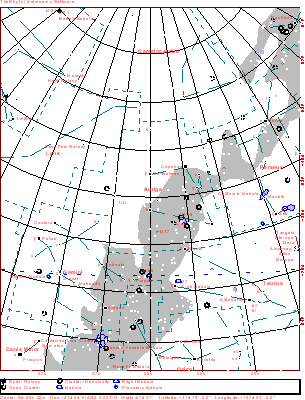
Click the map for a 909x1199 version of the above. Click here for a map better suited for use in the field.
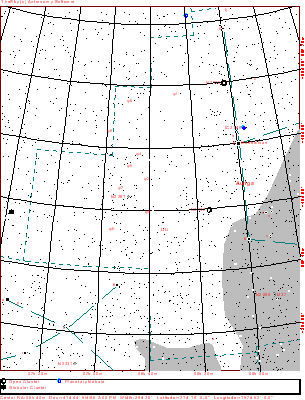
This is the eastern section of the constellation. The map displays stars to magnitude 10, and deepsky objects to magnitude 12. Click here for a map better suited for use in the field.
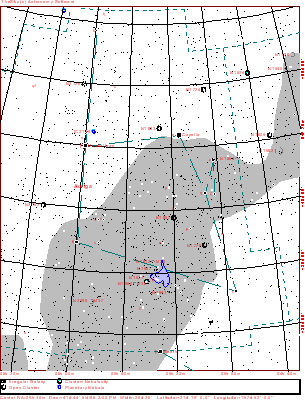
Click here for a map better suited for use in the field.
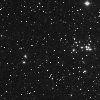 48k JPEG NGC2281 is a fairly rich, uncondensed (30 stars at mags. 7.3 and fainter) open cluster. Shining at mag. 5.4 and sized at 15', Dreyer goes on to say the stars are fairly "large," meaning bright. The location given has the cluster fall between all the bright stars in the photograph. The grouping to the right (west) best matches the cluster's description. It is .8° SSW of Psi 7 Aurigae in the northwest part of the constellation. This and all greyscale images on this page are from the Digital Sky Survey. 48k JPEG NGC2281 is a fairly rich, uncondensed (30 stars at mags. 7.3 and fainter) open cluster. Shining at mag. 5.4 and sized at 15', Dreyer goes on to say the stars are fairly "large," meaning bright. The location given has the cluster fall between all the bright stars in the photograph. The grouping to the right (west) best matches the cluster's description. It is .8° SSW of Psi 7 Aurigae in the northwest part of the constellation. This and all greyscale images on this page are from the Digital Sky Survey.
|
Right image: Detailed map of the region, excluding M37. Known collectively as Auriga Object 1, it repays detailed sweeping with binoculars and telescopes. Click here for a map better suited for use in the field. |
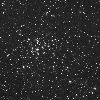 54k JPEG A member of Auriga Object 1, M36 (NGC1960) is a bright (mag. 6), compact (12') and rich open cluster located 5° SW of Theta Aurigae. Stars range from an estimated mag. 9-11. 54k JPEG A member of Auriga Object 1, M36 (NGC1960) is a bright (mag. 6), compact (12') and rich open cluster located 5° SW of Theta Aurigae. Stars range from an estimated mag. 9-11.
|
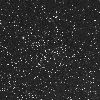 86k JPEG M38 (NGC1912) is an open cluster belonging to the Auriga Object 1. Dreyer calls it bright (mag 6.4), very large (21'), very rich (containing 100 stars from mags. 9.5 and fainter), and irregular in form. Some describe it as shaped like the Greek letter Pi. 86k JPEG M38 (NGC1912) is an open cluster belonging to the Auriga Object 1. Dreyer calls it bright (mag 6.4), very large (21'), very rich (containing 100 stars from mags. 9.5 and fainter), and irregular in form. Some describe it as shaped like the Greek letter Pi.
|
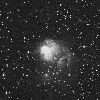 14k JPEG NGC1931 (Best 8) is an open cluster with nebulosity belonging to the Auriga Object 1. Dreyer calls it very bright (mag 11), large (3'), round, with 3 bright stars (the triple ADS4112) in the middle. 14k JPEG NGC1931 (Best 8) is an open cluster with nebulosity belonging to the Auriga Object 1. Dreyer calls it very bright (mag 11), large (3'), round, with 3 bright stars (the triple ADS4112) in the middle.
|
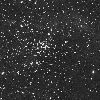 23k JPEG NGC1907 (Best 7) is an open cluster belonging to the Auriga Object 1. Dreyer calls it fairly rich (30 stars from mags. 9-12), condensed, and round. It glows at mag. 8 and covers 7'. 23k JPEG NGC1907 (Best 7) is an open cluster belonging to the Auriga Object 1. Dreyer calls it fairly rich (30 stars from mags. 9-12), condensed, and round. It glows at mag. 8 and covers 7'.
|
 95k JPEG Caldwell 31 (IC405) is called the Flaming Star nebula. Large (18'x30') and faint, it shines by the light of the variable AE Aurigae (bottom center). You find it 3° WSW of M38. From the Digital Sky Survey. 95k JPEG Caldwell 31 (IC405) is called the Flaming Star nebula. Large (18'x30') and faint, it shines by the light of the variable AE Aurigae (bottom center). You find it 3° WSW of M38. From the Digital Sky Survey.
|
 95k JPEG M37 (NGC2099) is a rich, condensed open cluster. Shining at mag. 5.6 and sized at 24', this is perhaps the showcase Auriga cluster. It is 4.8° SSW of Theta Aurigae. 95k JPEG M37 (NGC2099) is a rich, condensed open cluster. Shining at mag. 5.6 and sized at 24', this is perhaps the showcase Auriga cluster. It is 4.8° SSW of Theta Aurigae.
|
If you have any questions about the Hawaiian Astronomical Society
please
(link requires javascript).